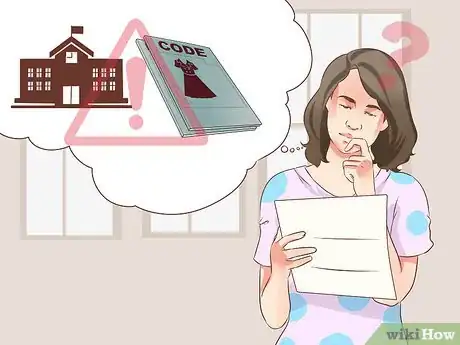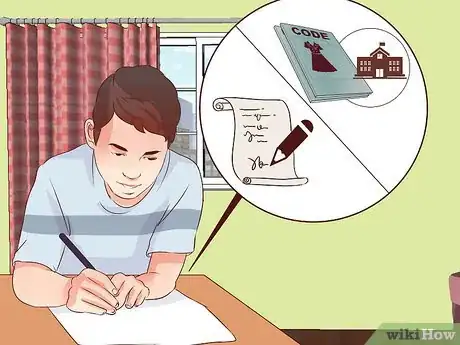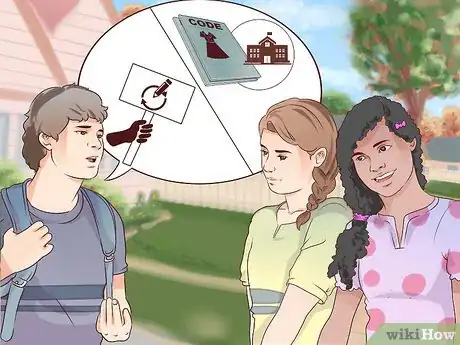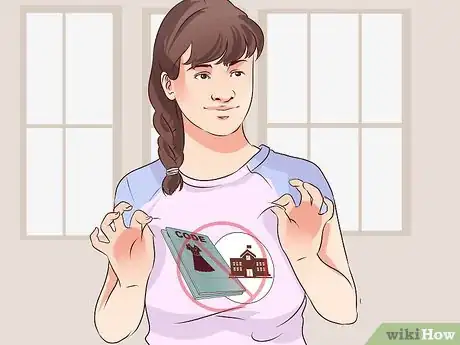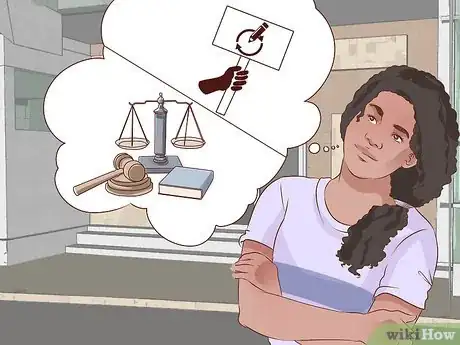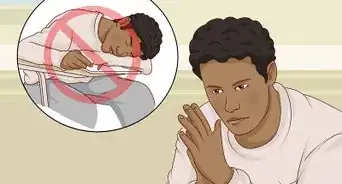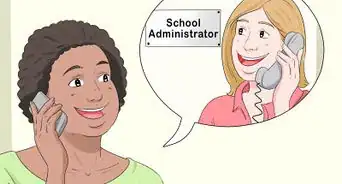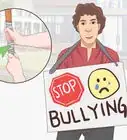This article was co-authored by Clinton M. Sandvick, JD, PhD. Clinton M. Sandvick worked as a civil litigator in California for over 7 years. He received his JD from the University of Wisconsin-Madison in 1998 and his PhD in American History from the University of Oregon in 2013.
There are 7 references cited in this article, which can be found at the bottom of the page.
wikiHow marks an article as reader-approved once it receives enough positive feedback. In this case, 87% of readers who voted found the article helpful, earning it our reader-approved status.
This article has been viewed 33,401 times.
In recent years, there has been a surge in student protests regarding school dress codes. Many of these protests involve claims that the dress codes discriminate based on gender and that dress codes are particularly damaging to gender nonconforming students. If you want to protest your school’s dress code, it is important that you carefully review the written policy, think about the best way to get your message across, and plan and carry out in-person and online protests. You should also familiarize yourself with your legal rights regarding school protests and dress codes.
Steps
Strengthening Your Protest Position
-
1Request a copy of the dress code. Before staging a protest, you should carefully review your school’s dress code policy. If the policy is not online or in a student handbook, you should request a copy from a school administrator. In order to have a successful protest, you must fully understand the policy and how it infringes on your rights. When reviewing the policy, consider the following:
- What clothes are deemed acceptable and unacceptable?
- Who makes the determination as to whether clothing is unacceptable?
- Are you required to wear a uniform or just dress in accordance with certain guidelines?
- You should note differing requirements for men and women.
- If the policy prohibits “disruptive” clothing or clothing that “interferes” with school activities, check whether the policy defines what activity constitutes disruptive or interfering.[1]
-
2Determine why you are protesting the dress code. A successful dress code protest needs to have a reason. Usually it will be based on a view that the dress code is unfair, discriminatory, or even harmful. Decide what it was that first made you upset about the dress code.[2]
- Many students are demanding changes in dress code policies because they want the policies to reflect changing norms in society. A code that was written 20 or more years ago will make certain assumptions about boys and girls that are not generally true today.
- Students are also challenging dress codes because they unfairly burden women and gender nonconforming youth.
Advertisement -
3Be open to speaking with your school administrators. Before launching a formal protest and even after the protest has been initiated, you should request a meeting with your school administrator. By maintaining an open dialogue about students’ concerns, you may educate the administration about changing dress and gender norms and explain why you find the policy discriminatory or offensive.[3]
- In a meeting, you can present your concerns in a persuasive way and even bring research that backs up your position.
- A meeting may allow school administrators to take action on students’ dress code concerns before a protest is conducted.
-
4Educate administrators about offensive policies. Some school administrators and teachers may not realize that the dress code policy is offensive or harmful to certain students. By requesting a meeting with teachers and administrators, you can explain why you find the policy harmful and ask for their help in correcting the problem.
- For example, in some schools, administrators may be dealing with gender nonconforming or transgender students for the first time and they may need help in understanding how the policies negatively impact these students.[4]
-
5Ask for student involvement in revising the dress code. If the school insists on keeping the dress code, you can ask that students be involved in creating a more inclusive dress code. This would allow students to engage in creating a dress code that better represents current clothing norms and gender equity.
- By involving students in policy making, students may be more likely to adhere to the dress code since they helped shape the policy.[5]
Protesting the Student Dress Code In Person
-
1Create a petition. If you are planning to stage a school protest it is helpful to recruit as many fellow students to your cause as possible. One of the easiest ways to gather support is by creating a school petition. By setting forth your reasons for protesting the dress code policy and collecting signatures in support of your protest, you can show school administrators how many students want a change to the dress code policy.
- A petition also lets you figure out how many other students will be willing to engage in other forms of protest.
- When collecting signatures from your classmates, ask them what other forms of protest they would support.
-
2Stage a walk out and picket the school. Another way that students have been protesting school dress codes is by staging walk outs.[6] On a designated date and time, students leave class and gather at a central meeting location. At the location, students then engage in picketing the school. For some agreed time, students would march on school grounds carrying signs that explained the protest and the change that they want to see.
- Be aware that by leaving school without permission, you may suffer a disciplinary response from the school.
- If you can get a significant number of students to participate in the walk out, it would show the school that the students have serious concerns over the dress code.
-
3Create clothing that contains a protest message. To protest biased dress code policies, you can write the language of the policy or words that teachers or administrators said to you when explaining why your clothing violated the dress code. If the language used by the school is inflammatory or gender biased, your clothing becomes a protest statement.
- For example, after being sent home for a dress code violation, a student wrote the words that her administrator said to her across her shirt and returned to school. The words were, “It doesn't cover your crotch. You'll distract the boys.”[7]
-
4Wear the offending clothing to school as part of a protest. Similar to a walkout, you can prearrange with members of the student body to wear clothing that would violate the dress code as part of a protest. For example, to bring attention to how the dress code affects gender nonconforming students in one school, boys dressed in skirts and dresses for a day and girls dressed in more traditional “boys” clothing.[8]
Using Social Media to Protest Student Dress Code
-
1Use social media sources to spread your protest. Generally students have broad rights to express their discontent and protest as long as they use off-campus computers to express themselves. You could create a website dedicated to airing complaints that students have about the dress code. The Supreme Court has ruled that students’ critiques of their school on a website is protected speech under the U.S. Constitution.
- It is important to keep the protest focused on the topic and use appropriate language. If you create a website for comments, you need to monitor it and delete messages that are off the topic or that use offensive language. Any threatening language should not be tolerated either.
-
2Post pictures of “offensive” clothing. Another way to gain support and protest student dress codes is to post pictures of you wearing clothing that was deemed offensive and in violation of the dress code. If you were sent home for clothing that would seem appropriate to most individuals, you should consider posting a picture of yourself in the “offending” outfit on social media. If your picture and comments about the dress code are shared often enough, the photograph can be used not only to highlight the problems with the dress code but also to help you gain support for other forms of protest.
- Some students have even created hashtags such as #IAmMoreThanADistraction to create an online space for other people to discuss humiliating and/or sexist experiences they had with school dress codes.[9]
-
3Create an online petition. There are a number or websites that allow users to create free online petitions. As students tend to be more tech savvy, it may be easier to create an online petition than to use a more traditional paper petition. When creating a petition, you are generally asked to describe the situation that you are trying to change. Explain all of the reasons why the policy is outdated, discriminatory or not inclusive. Once you have created your petition, you can circulate it via email and through social media. An online petition may allow you to reach many more people than just those who you see at school.[10]
Recognizing Your Legal Rights Regarding Student Dress Code Protests
-
1Recognize a school’s right to have a dress code. Schools have the duty to apply rules that provide students with an effective public school education in a safe and secure setting. To create this school atmosphere, schools are permitted to require a dress code that furthers the mission of the school and prevents violent and abusive behavior.
- Schools are generally allowed to have dress codes that ban vulgar or obscene clothing, or clothing that disrupts school activity.
- Schools cannot prohibit clothing that censors student expression, particularly when the school doesn’t like the student’s message.[11]
-
2Consider whether your clothing is protected as free speech. Schools run into trouble with dress codes when they act to limit a student’s right to self expression or free speech. The freedom of speech is not unlimited in school settings. Even if a student is engaging in self-expression, the school can limit the student’s right to self-expression if the school believes that the student’s speech or expression would be a substantial disruption of school activities or invade the rights of others.
- For example, the Supreme Court said that wearing black armbands to protest the Vietnam war was protected by the 1st Amendment.
- The Supreme Court ruled that giving a lewd, vulgar political speech at a school assembly was not protected speech because it was outweighed by the school’s interest in teaching students appropriate behavior.
- Dress codes cannot be used to limit religious freedom, which is also protected by the 1st Amendment. For example, individuals have challenged dress codes based on religious freedom for the following: Muslim girls suspended for wearing a head scarf; codes that banned cross necklaces; bans on traditional dress such as wearing tribal feathers to graduation; and ban on rosaries.[12]
-
3Know your rights regarding protest. You have the right to peacefully protest a dress code policy. However, if you engage in an activity that violates the policy or breaks other school rules, you may be punished according to the student handbook. You cannot be punished more harshly because you violated the school’s dress code or rules during a protest.[13]
References
- ↑ http://education.findlaw.com/student-rights/school-dress-codes.html
- ↑ http://www.cnn.com/2016/02/25/living/dress-code-protests-irpt/
- ↑ https://www.theatlantic.com/education/archive/2015/10/school-dress-codes-are-problematic/410962/
- ↑ https://www.theatlantic.com/education/archive/2015/10/school-dress-codes-are-problematic/410962/
- ↑ https://www.theatlantic.com/education/archive/2015/10/school-dress-codes-are-problematic/410962/
- ↑ http://www.nydailynews.com/news/national/utah-students-walk-high-school-protest-dress-code-article-1.1949459
- ↑ http://www.cnn.com/2016/02/25/living/dress-code-protests-irpt/
- ↑ http://www.cnn.com/2016/02/25/living/dress-code-protests-irpt/
- ↑ http://www.cnn.com/2016/02/25/living/dress-code-protests-irpt/; https://www.theatlantic.com/education/archive/2015/10/school-dress-codes-are-problematic/410962/
- ↑ https://www.change.org; https://www.theatlantic.com/education/archive/2015/10/school-dress-codes-are-problematic/410962/
- ↑ http://education.findlaw.com/student-rights/school-dress-codes.html
- ↑ http://education.findlaw.com/student-rights/school-dress-codes.html
- ↑ http://www.riaclu.org/know-your-rights/pamphlets/know-your-rights-school-dress-codes

